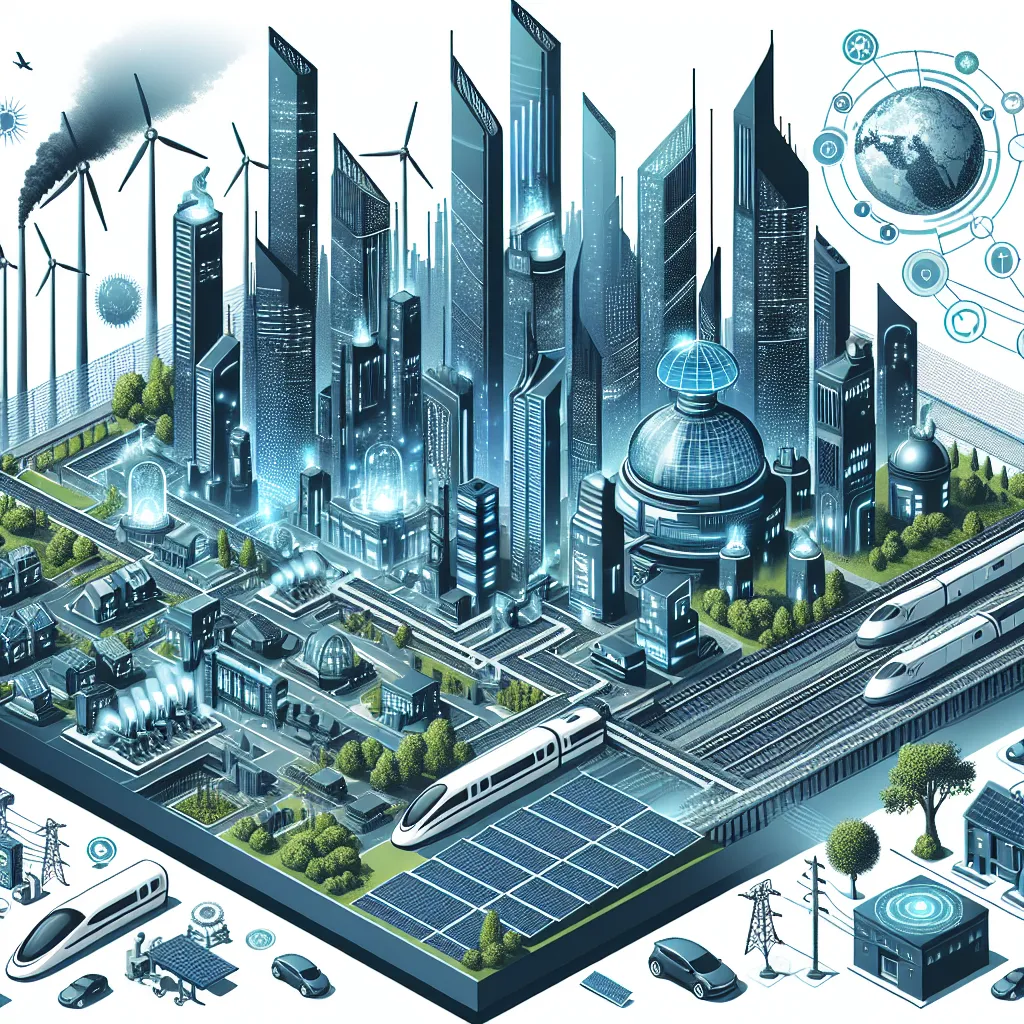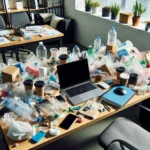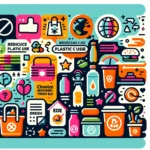The IELTS Reading section is a crucial component of the test, assessing your ability to comprehend complex texts and extract relevant information. Today, we’ll focus on a topic that has become increasingly prevalent in recent years: “The role of technology in reducing pollution.” This subject has appeared in various forms in past IELTS exams and continues to be relevant due to growing environmental concerns worldwide. Given its importance and the frequency with which it has been featured, there’s a high probability that you may encounter a similar theme in future IELTS Reading tests.
Reading Passage
The Technological Revolution in Environmental Protection
In recent years, the world has witnessed a significant surge in technological innovations aimed at combating pollution. From air purification systems to waste management solutions, technology is playing an increasingly crucial role in our fight against environmental degradation. This shift towards tech-driven environmental protection is not just a trend but a necessity in our rapidly industrializing world.
One of the most promising areas of development is in air pollution control. Advanced sensors and artificial intelligence are now being employed to monitor air quality in real-time, providing invaluable data for policymakers and citizens alike. In major cities like Beijing and New Delhi, where air pollution has reached critical levels, these technologies are proving instrumental in implementing targeted interventions.
Water pollution, another pressing environmental concern, is also being addressed through innovative technological solutions. Nanotechnology, for instance, is being used to develop highly efficient water filtration systems. These systems can remove even the smallest contaminants, including microplastics and chemical pollutants, from water sources. In developing countries, where access to clean water remains a challenge, portable water purification devices powered by solar energy are making a significant impact.
The energy sector, long considered a major contributor to pollution, is undergoing a technological revolution of its own. Renewable energy technologies, such as solar panels and wind turbines, are becoming increasingly efficient and cost-effective. Moreover, smart grid systems are optimizing energy distribution, reducing waste, and integrating renewable sources more effectively into the power supply.
In the realm of waste management, technology is offering new ways to reduce, reuse, and recycle. Advanced sorting systems using artificial intelligence and robotics are improving the efficiency of recycling processes. Meanwhile, innovations in biodegradable materials are helping to reduce the amount of non-recyclable waste produced.
Transportation, another significant source of pollution, is being transformed by electric and hydrogen-powered vehicles. These eco-friendly alternatives are becoming more accessible and practical, promising a future with significantly reduced emissions from the transport sector.
However, it’s important to note that technology alone is not a panacea for our environmental problems. The effectiveness of these innovations depends largely on their widespread adoption and proper implementation. This requires not only technological advancement but also supportive policies, public awareness, and individual commitment to environmental protection.
Moreover, as we develop and deploy these technologies, we must be mindful of their own environmental impact. The production of solar panels, for instance, involves mining rare earth metals, which can have its own environmental consequences if not managed responsibly.
In conclusion, while technology offers powerful tools in our fight against pollution, it must be part of a holistic approach that includes policy changes, education, and individual action. As we continue to innovate, the hope is that we can create a sustainable balance between technological progress and environmental preservation, ensuring a cleaner, healthier planet for future generations.
 Technology reducing pollution
Technology reducing pollution
Questions
True/False/Not Given
For questions 1-5, read the following statements and decide if they are True, False, or Not Given based on the information in the passage.
- Air quality monitoring systems using AI are being used in cities like Beijing and New Delhi.
- Nanotechnology is primarily used for air purification rather than water filtration.
- Smart grid systems are helping to integrate renewable energy sources into power supplies more efficiently.
- The production of all green technologies has no negative environmental impact.
- Electric and hydrogen-powered vehicles are currently the most common form of transportation globally.
Multiple Choice
Choose the correct letter, A, B, C, or D for questions 6-10.
-
According to the passage, which of the following is NOT mentioned as a area where technology is helping to reduce pollution?
A) Air quality monitoring
B) Water purification
C) Noise reduction
D) Waste management -
The passage suggests that the effectiveness of pollution-reducing technologies depends on:
A) Their cost-effectiveness
B) Government funding
C) Widespread adoption and proper implementation
D) The speed of technological advancement -
Which of the following is mentioned as a challenge in the development of solar energy?
A) Lack of public interest
B) High maintenance costs
C) Environmental impact of rare earth metal mining
D) Inefficiency in energy production -
The author’s stance on technology’s role in reducing pollution can best be described as:
A) Highly skeptical
B) Cautiously optimistic
C) Entirely pessimistic
D) Unequivocally enthusiastic -
The passage implies that a successful approach to reducing pollution should:
A) Focus solely on technological solutions
B) Rely primarily on individual actions
C) Combine technology with policy changes and education
D) Prioritize economic growth over environmental concerns
Matching Headings
Match the following headings to the correct paragraphs in the passage. Write the correct number (i-viii) next to questions 11-14.
i. The limitations of technology in environmental protection
ii. Innovations in waste management and recycling
iii. The transformation of the transportation sector
iv. Advancements in air pollution control
v. The role of renewable energy in reducing pollution
vi. Water purification technologies
vii. The need for a holistic approach to environmental protection
viii. The environmental impact of green technologies
- Paragraph 3: __
- Paragraph 5: __
- Paragraph 6: __
- Paragraph 8: __
Answer Key
- True
- False
- True
- False
- Not Given
- C
- C
- C
- B
- C
- vi
- ii
- iii
- viii
Explanations
- The passage explicitly mentions that advanced sensors and AI are being used to monitor air quality in Beijing and New Delhi.
- The passage states that nanotechnology is being used for water filtration, not air purification.
- The text directly states that smart grid systems are optimizing energy distribution and integrating renewable sources more effectively.
- The passage mentions that the production of solar panels can have environmental consequences, indicating that not all green technologies are without negative impact.
- While electric and hydrogen-powered vehicles are mentioned, there’s no information about their current prevalence globally.
- Noise reduction is not mentioned in the passage as an area where technology is helping to reduce pollution.
- The passage clearly states that the effectiveness of these innovations depends on their widespread adoption and proper implementation.
- The text mentions that the production of solar panels involves mining rare earth metals, which can have environmental consequences.
- The author acknowledges the potential of technology but also points out its limitations and the need for a holistic approach, suggesting a cautiously optimistic stance.
- The conclusion emphasizes the need for a holistic approach that combines technology with policy changes, education, and individual action.
- Paragraph 3 discusses water purification technologies, including nanotechnology and portable water purification devices.
- Paragraph 5 talks about innovations in waste management, including advanced sorting systems and biodegradable materials.
- Paragraph 6 focuses on the transformation of the transportation sector through electric and hydrogen-powered vehicles.
- Paragraph 8 discusses the environmental impact of green technologies, specifically mentioning the production of solar panels.
Common Mistakes
-
Overlooking specific details: In True/False/Not Given questions, it’s crucial to pay attention to precise details. For instance, in question 2, some might mistakenly answer “True” if they don’t carefully read that nanotechnology is used for water filtration, not air purification.
-
Making assumptions: For Not Given statements, avoid the temptation to use general knowledge. Stick strictly to the information provided in the text.
-
Misinterpreting the author’s tone: In multiple-choice questions like number 9, it’s important to accurately gauge the author’s overall stance based on the entire passage, not just isolated statements.
-
Rushing through Matching Headings: This question type requires a good understanding of the main idea of each paragraph. Take time to read both the paragraph and the heading options carefully.
-
Failing to eliminate obviously incorrect answers: In multiple-choice questions, use the process of elimination to increase your chances of selecting the correct answer.
Vocabulary
- Surge (noun) – /sɜːrdʒ/ – a sudden large increase
- Degradation (noun) – /ˌdeɡrəˈdeɪʃn/ – the process of becoming worse or less in quality
- Interventions (noun) – /ˌɪntərˈvenʃnz/ – actions taken to improve a situation or prevent it from getting worse
- Nanotechnology (noun) – /ˌnænəʊtekˈnɒlədʒi/ – the science of working with atoms and molecules to build devices extremely small in size
- Biodegradable (adjective) – /ˌbaɪəʊdɪˈɡreɪdəbl/ – capable of being decomposed by bacteria or other living organisms
- Panacea (noun) – /ˌpænəˈsiːə/ – a solution or remedy for all difficulties or diseases
Grammar Points
-
Passive Voice: “Advanced sensors and artificial intelligence are now being employed…” This structure is often used in academic and scientific writing to focus on the action rather than the actor.
-
Present Perfect Continuous: “The world has witnessed a significant surge…” This tense is used to describe an action that started in the past and continues to the present, emphasizing its ongoing nature.
-
Conditional Sentences: “The effectiveness of these innovations depends largely on their widespread adoption…” This structure is used to express that one thing is contingent on another.
-
Comparative Structures: “Renewable energy technologies, such as solar panels and wind turbines, are becoming increasingly efficient and cost-effective.” This structure is used to show change or progression over time.
Tips for IELTS Reading Success
-
Time Management: Practice dividing your time equally among the three sections of the reading test. Aim to spend no more than 20 minutes on each section.
-
Skim and Scan: Quickly skim the passage to get a general idea, then scan for specific information when answering questions.
-
Read Questions First: Before reading the passage in detail, look at the questions to know what information you need to find.
-
Vocabulary Building: Regularly read academic articles on various topics to expand your vocabulary and familiarity with different writing styles.
-
Practice Paraphrasing: Many correct answers in IELTS Reading are paraphrases of the original text. Develop your ability to recognize ideas expressed in different words.
-
Stay Focused: The Reading test can be lengthy and challenging. Practice maintaining concentration for extended periods.
-
Use Context Clues: If you encounter unfamiliar words, try to deduce their meaning from the context rather than getting stuck.
-
Answer All Questions: There’s no penalty for wrong answers, so make sure to attempt every question, even if you have to guess.
By following these tips and regularly practicing with diverse reading materials, you can improve your performance in the IELTS Reading test. Remember, consistent practice is key to achieving a high score in this challenging section of the IELTS exam.
For more practice on environmental topics, you might find our articles on the role of technology in reducing carbon footprints and how to reduce environmental noise pollution helpful. These resources can provide additional context and vocabulary related to environmental issues, which are frequently featured in IELTS Reading tests.


